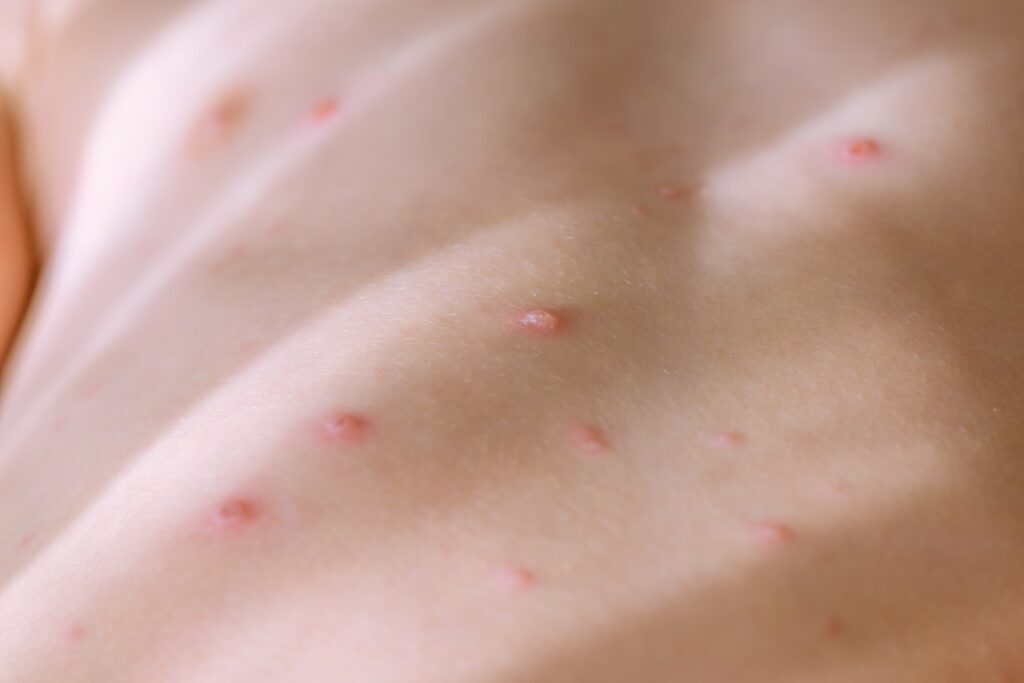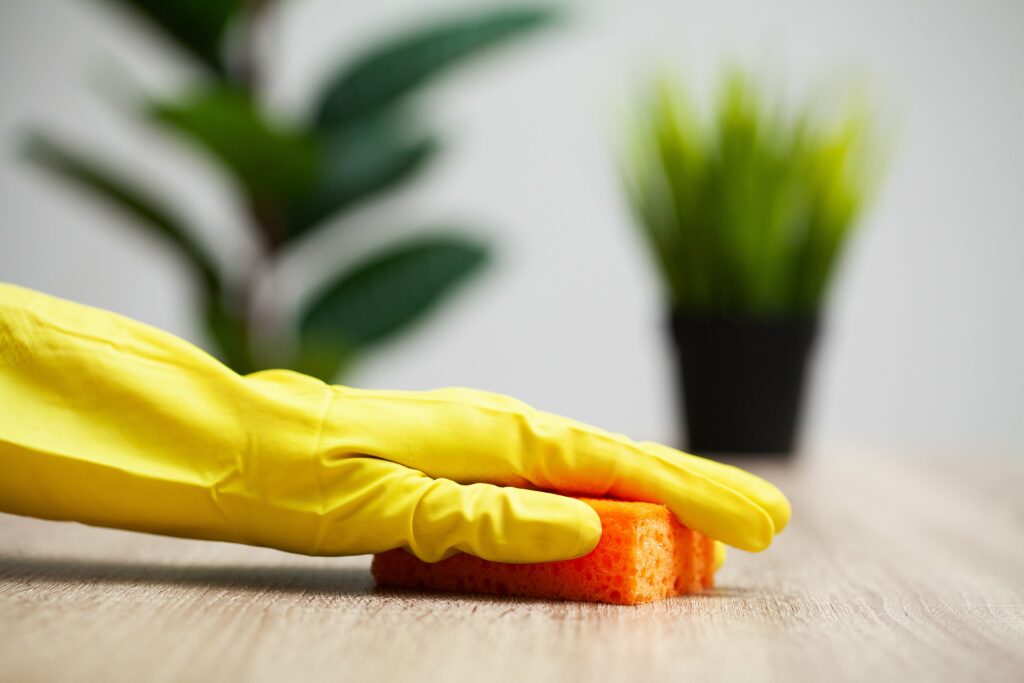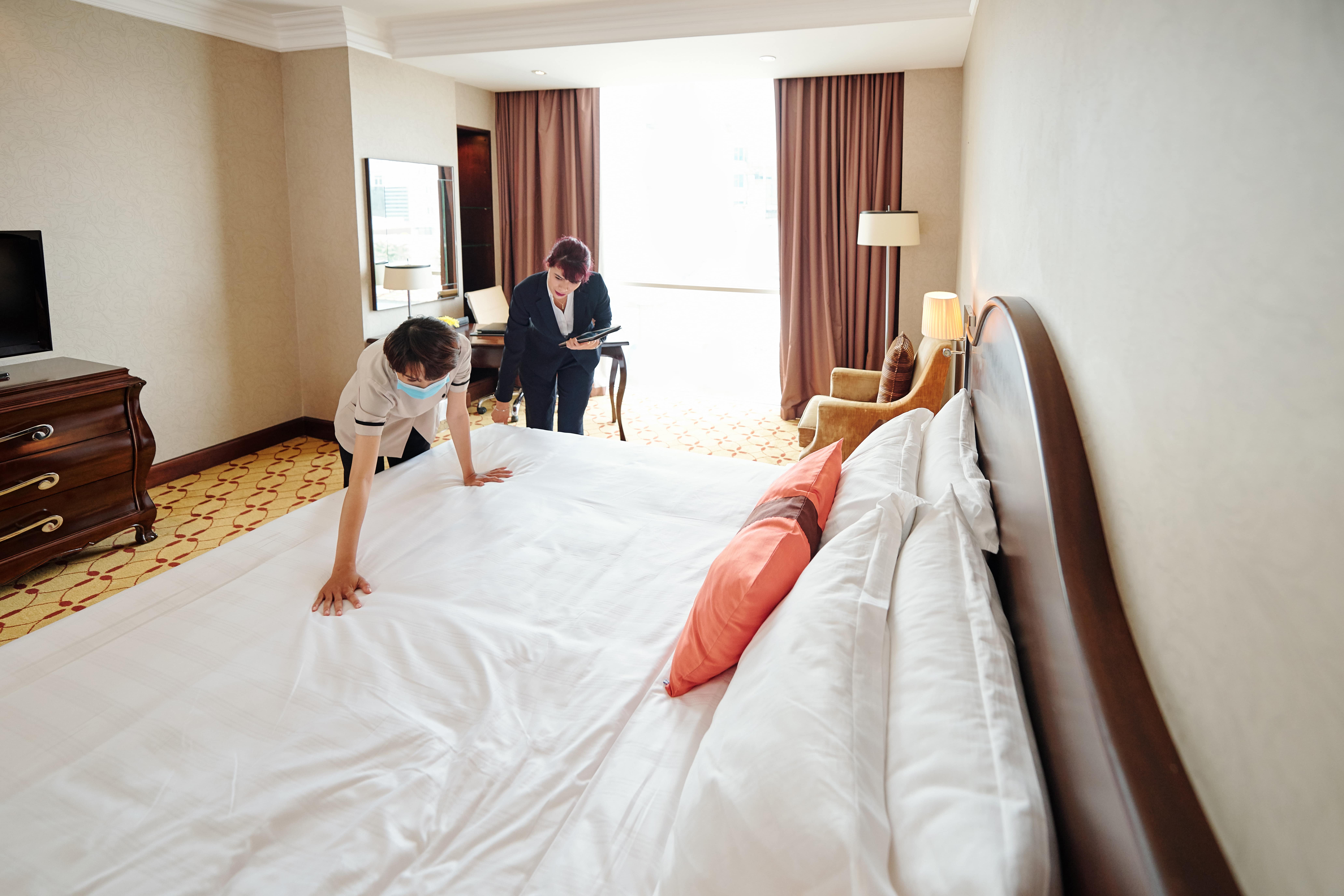The Silent Threat Lurking Among Us: Bed Bugs
Imagine settling into a cozy hotel room, excited for a well-deserved vacation or a productive business trip. Little did you know that while you rest, tiny home bed bugs are ready to feast upon your unsuspecting flesh. These minuscule vampires have become one of the most formidable pests in the hospitality industry, infiltrating hotels and accommodations worldwide.
Safeguard Your Peace of Mind: Discover proven techniques to control and prevent bed bug infestations. Dive into our article, Mastering the Art of Bed Bug Eradication, and regain control over your living space.
The Battle Against the Bloodthirsty Invaders
The importance of preventing bed bug infestations cannot be overstated. These cunning creatures not only pose a direct threat to human health but can also cause severe damage to an establishment’s reputation.
Picture this: a guest wakes up covered in itchy red welts and notices blood stains on their pristine bed linens. What do they do?
They take to online review platforms, sharing their horrifying experience with potential future guests. The negative impact on guest satisfaction and the reputation of hotels is undeniable.
To combat these tenacious bugs effectively, a multi-pronged approach is necessary—one that combines preventive measures with prompt action when signs of bed bugs are detected. Let us delve into an overview of the steps involved in effective bed bug prevention for hotels and accommodations.
Prevention: The Best Offense Against Bed Bugs
Bed bug prevention involves diligent efforts aimed at minimizing the risk of infestation within different areas of an establishment. From guest rooms to public spaces, every nook and cranny must be inspected and protected against these stealthy pests. Firstly, focusing on guest rooms is crucial as they provide prime breeding grounds for these unwelcome visitors.
By understanding which types of mattresses are prone to bed bug infestations, such as those with cracks or crevices in box springs, hoteliers can take proactive measures to avoid bed bugs and protect their guests. Regularly inspecting bedding for signs of bed bugs, such as live bugs, bloodstains, or dark fecal spots, is vital in preventing their spread.
In addition to guest rooms, furniture and upholstery also demand thorough attention. Soft chairs and upholstered furniture can harbor these pests, making regular inspection and cleaning procedures essential.
Using protective covers or encasements on furniture items can act as a shield against potential infestations. Public areas like lobbies, lounges, and common floor spaces should not be overlooked either.
These bustling spaces present the perfect opportunity for bed bugs to hitch a ride on unwitting guests or staff members. Implementing effective cleaning practices, including vacuuming upholstered furniture and tile floors regularly, can significantly minimize the risk of infestation.
Other preventive measures such as the strategic placement of traps or barriers can act as a safeguard against unwanted visitors. Understanding the significance of preventing bed bug infestations in hotels and accommodations is paramount for maintaining guest satisfaction and safeguarding an establishment’s reputation.
By implementing comprehensive prevention strategies that encompass guest rooms, public areas, and diligent hygiene practices throughout all areas of an establishment, we can combat these resilient pests head-on. Remember: vigilance is key when it comes to keeping these bloodthirsty intruders at bay!
Understanding Bed Bugs
A Notorious Past: The History and Origin of Bed Bugs
Bed bugs have quite a notorious reputation, and rightly so. These blood-sucking pests have plagued humankind for centuries, making their presence known in various civilizations throughout history.
While the exact origin of bed bugs remains uncertain, historians believe they may have originated from ancient caves or from human interaction with animals. However, it was during the 20th century that bed bug infestations significantly declined due to improved hygiene practices and the use of powerful insecticides.
The Sneaky Culprits: Physical Characteristics and Behavior of Bed Bugs
To understand how to combat these pesky creatures, it is essential to grasp their physical characteristics and sneaky behavior. Adult bed bugs are small, oval-shaped insects that measure about 4-5 mm in length. They are typically reddish-brown but can appear darker after feeding on blood.
Bed bugs have six legs, antennae, and possess a flat body which allows them to hide in narrow crevices. When it comes to behavior, bed bugs are primarily nocturnal creatures; they prefer to emerge under the cover of darkness when humans are at rest.
They seek out warm-blooded hosts (yes, that means us!) for their blood meals by detecting body heat and the carbon dioxide we exhale. Once they find a suitable host – often while we’re blissfully asleep – they use their elongated mouthparts to pierce our skin and feed on our blood for several minutes before returning stealthily to their hiding spots.
Telltale Signs: Common Signs and Symptoms of a Bed Bug Infestation

Detecting a bed bug infestation early is crucial for effective control measures. One telltale sign is waking up with unexplained bite marks on exposed skin areas such as the face, neck, arms, and legs.
These bites are usually painless at first and may be mistaken for other insect bites or skin conditions. Apart from bite marks, there are other indicators of a bed bug infestation.
Dark fecal stains on sheets or mattresses are one such sign. These stains resemble small black dots and are a result of digested blood excreted by bed bugs.
Additionally, you might spot tiny translucent eggs or molted exoskeletons shed by growing nymphs. It’s important to note that not everyone reacts to bed bug bites in the same way; some individuals may not show any visible signs of being bitten.
Therefore, if you strongly suspect a bed bug infestation in your home or hotel room based on these signs, it is crucial to take immediate action to both prevent bed bugs from further spread and ensure peace of mind for yourself and others sharing the space. Remember, knowledge is key when it comes to battling these formidable foes.
By understanding their history, physical characteristics, behavior patterns, and common signs of infestation, you’ll be better equipped to tackle any encounters with these resilient pests head-on. Stay vigilant!
Identifying High-Risk Areas for Bed Bugs in Hotels
Guest rooms: beds, mattresses, and bedding

Subtle whispers of anticipation fill the air as weary travelers unlock the door to their hotel room, yearning for a restful slumber. However, lurking within the cozy confines of the bed are the potential tormentors known as bed bugs. Knowing which types of mattresses are more prone to bed bug infestations can be a valuable defense.
While all mattresses can fall victim to these pesky intruders, those with crevices and seams offer prime hiding spots for these resilient pests. Memory foam and pillow-top mattresses are particularly vulnerable due to their intricate construction, providing ample opportunities for bed bugs to take up residence undetected.
Inspecting bedding for signs of infestation is another crucial aspect of proactive bed bug prevention. A vigilant eye should look out for tiny bloodstains or dark excrement marks on sheets or pillowcases – telltale signs that these unwanted guests have been feasting during the night.
Additionally, be vigilant in checking mattress seams and headboards for any live bugs or shed skins that indicate an active infestation. To fortify your defenses against these nocturnal nuisances, implementing effective strategies is essential.
Encasing mattresses in specially designed covers creates an impervious barrier that prevents both entry and escape for any lingering hitchhikers. These encasements should be made from durable materials such as tightly woven fabric or plastic that cannot be penetrated by even the craftiest of bed bugs.
Furniture and upholstery in guest rooms
While beds take center stage when it comes to bed bug concerns in guest rooms, furniture and upholstery can often become secondary hiding places for these stealthy critters. Assessing the bed bug risk associated with upholstered furniture is vital to prevent its spread throughout a hotel room or even different rooms within the establishment.
Soft chairs and sofas are particularly attractive to bed bugs due to their cozy padding and discreet corners that provide ideal hiding spots. Regular inspection and cleaning procedures are paramount in maintaining the integrity of furniture and upholstery.
Housekeeping staff should be trained to thoroughly inspect all nooks and crannies where bed bugs may try to hide, such as under seat cushions or behind upholstery tags. It is crucial to emphasize the importance of meticulous attention to detail during these inspections.
To further safeguard against potential infestations, hotels should consider implementing protective measures such as using specially designed covers or encasements for furniture. These encasements act as a formidable barrier between the pests and unsuspecting guests, effectively preventing any unwanted bites or hitchhiking opportunities.
Public areas: lobbies, lounges, and common spaces
As guests traverse through public areas like lobbies, lounges, and other common spaces within a hotel, they unknowingly become conduits for bed bug transportation. These tiny hitchhikers can quickly find refuge in new locations if proper preventive measures are not in place. To combat this threat effectively and avoid hotel bed bugs, it is crucial to explore the potential hiding spots for bed bugs in these areas.
Effective cleaning practices play a pivotal role in minimizing the risk of infestation within public areas. Regular vacuuming of carpets and upholstery helps remove any stray bed bugs or eggs that may have found their way into these communal spaces.
Additionally, thorough cleaning protocols must be established for curtains or drapes that could potentially harbor these unwelcome intruders. Implementing preventive measures such as traps or barriers can also prove instrumental in deterring bed bug activity.
Strategically placing traps near entrances or cozy seating areas can help identify any potential infestation hotspots before they become widespread issues. Installing physical barriers such as door sweeps or weather stripping can create an additional layer of protection against these persistent pests.
By recognizing high-risk areas for bed bugs in hotels and implementing comprehensive prevention strategies, the hospitality industry can ensure that guests have a delightful, bite-free experience during their stay. Remember, an ounce of prevention is worth a pound of cure when it comes to keeping hotel bed bugs from at bay.
So, inspect diligently, protect proactively, and let your guests breathe easy knowing they can sleep soundly without any encounters with these unwelcome intruders.
Preventing Bed Bug Infestations in Hotels
Employee Training on Recognizing Signs of Infestation
One of the most crucial steps in preventing bed bug infestations is ensuring that hotel staff receive comprehensive training on recognizing the signs of these pesky critters. Hotel employees should be educated about the physical characteristics and behavior of a bed bug inspection other bugs, as well as the common areas where they are likely to hide.
By familiarizing themselves with these signs, such as small bloodstains on bedding or dark spots indicating their fecal matter, hotel staff can act promptly to address any potential infestations. Training programs should also include practical exercises to help employees better understand how to identify bed bugs and differentiate them from other pests, such as fleas or ticks.
Providing Education on Identification Techniques
In addition to recognizing signs, hotel staff should receive thorough education on identification techniques. This includes knowledge about the different life stages of bed bugs, from eggs to nymphs and adults, and how to spot them in various hiding places.
They should learn about their ability to squeeze into tiny cracks and crevices, making detection more challenging. Understanding the behavior and biology of bed bugs empowers hotel employees not only to identify infestations but also to take appropriate action based on their findings.
Importance of Reporting Potential Issues Promptly
Prompt reporting is essential when it comes to dealing with potential bed bug issues in hotels. Hotel staff must be encouraged to report any suspected sightings immediately so that necessary measures to kill bed bugs can be taken promptly.
Establishing a culture where timely reporting is encouraged helps prevent isolated incidents from turning into larger scale infestations that could negatively impact guests’ experiences. By swiftly addressing potential problems through early intervention, hotels can safeguard their reputation while efficiently resolving any issues affecting guest comfort.
Establishing Protocols for Handling Reported Cases
Hotels should establish clear protocols for handling reported cases of bed bugs. This includes steps to be taken when a guest or staff member encounters a potential infestation hotel bedbugs, such as temporarily isolating the affected room and conducting a thorough inspection.
Protocols should also detail the process for engaging professional pest control services to assess and address the situation. By having well-defined procedures in place, hotels can respond efficiently and effectively, minimizing any disruption to guests’ stays and swiftly eradicating bed bug infestations.
Maintaining Cleanliness through Regular Inspections

Maintaining cleanliness is vital in preventing bed bug infestations. Regular inspections of guest rooms, furniture, and public areas are essential for early detection. Hotel staff should conduct routine checks of mattresses, bedding, upholstery, and other potential hiding spots to proactively eliminate bed bugs and identify any signs of infestation.
These inspections should be carried out diligently using proper lighting and inspection tools designed for this purpose. By implementing rigorous cleaning schedules that include thorough vacuuming, laundering fabrics at high heat settings, and regularly sanitizing surfaces, hotels can significantly reduce the risk of bed bug problems.
Creating a Comprehensive Cleaning Schedule
To ensure effective prevention measures against bed bugs, hotels need to establish a comprehensive cleaning schedule that addresses all areas prone to infestation. It is crucial to pay close attention not only to guest rooms but also public spaces like lobbies and lounges where people frequently gather.
Upholstered furniture in these areas poses potential risks as well if not properly maintained. By allocating sufficient time in the cleaning schedule for thorough inspections and targeted treatments when necessary, hotels can maintain high standards of cleanliness while mitigating bed bug risks.
Utilizing Professional Pest Control Services
While preventive measures are essential in deterring bed bugs from infesting hotels, it is equally crucial to engage professional pest control services regularly. Expert pest control technicians possess the knowledge and expertise to identify and eradicate bed bugs bite and bug infestations effectively.
These professionals employ various methods of avoiding hotel bedbugs, including targeted treatments, heat treatments, and pesticide application, depending on the severity of the problem. Regular inspections and treatments by professionals provide an added layer of protection against bed bugs, giving hotels peace of mind in maintaining a bed bug-free environment for their guests.
Conclusion
In the battle against bed bugs, prevention is key. By implementing thorough employee training programs focused on recognizing signs and identifying bed bugs, hotels can equip their staff with valuable knowledge to promptly address any potential issues.
Establishing protocols for reporting and handling reported cases ensures swift action, minimizing guest discomfort and preventing infestations from spreading. Regular inspections coupled with comprehensive cleaning schedules help maintain cleanliness while mitigating bed bug risks.
And finally, utilizing professional pest control services offers expert assistance in eradicating any existing infestations effectively. Remember that a proactive approach combined with these preventive measures helps hotels create a safe and comfortable environment for their guests to enjoy their stay without worrying about unwelcome “roommates.” By prioritizing bed bug prevention strategies, hotels can ensure that every guest leaves satisfied, providing them with an enjoyable trip as they can return home to the comfort of their own home—free from any concerns about hitchhiking pests.
D-Termination: Las Vegas’ Premier Pest Control, offers the solution to your bed bug woes!

Are you grappling with a bed bug problem in Las Vegas? Fear not, for D-Termination is here to provide assistance. Our team of experts specializes in eradicating bed bug infestations and restoring comfort to your living space. Bid farewell to bed bugs and opt for the effective pest control services of D-Termination today!
Contact us at 702-919-6310 or visit dtermination.com to schedule your bed bug control service and reclaim your space from these persistent pests.
Frequently Asked Questions:
Hotels typically implement preventive measures like regular inspections, training staff to identify bed bugs, using mattress and furniture encasements, and employing professional pest control services.
While it is possible to stay in a hotel room with bed bugs and prevent bringing them home, it requires careful inspection of your belongings and taking precautions such as keeping luggage elevated and laundering clothing on high heat immediately after the stay.
If you have slept in a hotel room with bed bugs, it is advisable to thoroughly inspect your belongings, isolate and wash any potentially infested items, and monitor yourself for any signs of bites or skin reactions.
The appropriate compensation or resolution from a hotel for a bed bug issue can vary. It is recommended to communicate the problem to the hotel management and discuss potential resolutions such as changing rooms, refunding or compensating the affected stay, or seeking professional assistance for treatment if necessary.
If you found this article to be engaging, you might also find the following suggested articles or topics worth exploring:
Guarding Your Home: Mastering the Art of Dodging Bed Bugs While Scouring for Secondhand Treasures








